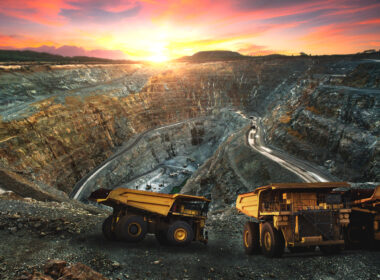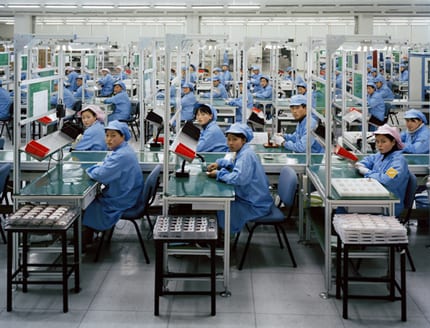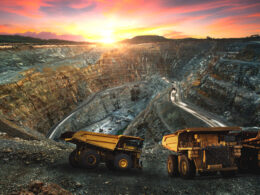For the full interactive edition, please CLICK HERE
Dear Readers,
Something very important happened to the company that owns part of the world’s most important silver project…It just confirmed another massive discovery. And I mean massive. An absolute monster.
I am talking about MAG Silver (TSX: MAG) (NYSE.A: MVG).
If you’re a new reader, go back and read my initial report, “The World’s Most Important Silver Project” to get a better understanding of what you are about to read.
The market has been focused and giving value only to MAG’s 44% in Juanicipio, one of the world’s highest grade undeveloped silver projects. I don’t blame them. Juanicipio is world class and their recent Preliminary Economic Assessment proves it. I have no doubt the project will go into production.
But I am not focused on Juanicipio. For me that’s not where the major upside is. Mineral and resource investors know the biggest upside to any deal is when a company makes a massive new discovery.
MAG just announced a massive discovery. But the market doesn’t even know it yet.
A Massive Discovery at MAG Silver
On May 20th, I published a report on MAG’s Cinco de Mayo project titled, “An Absolute Monster.” So let’s back track and review quickly what Cinco is.
The Biggest CRD System in the World?
The Cinco de Mayo (Cinco) project hosts a Carbonate Replacement Deposit (“CRD”). These CRD’s represent approximately 40% of Mexico’s 10-billion ounce historic silver production and have been mined for more than 400 years. They are characterized by massive to semi-massive silver-lead-zinc sulphide intrusions. The attractive characteristics of CRDs are simple: They have potential for large tonnage and high grades; potential for substantial base metal credits to the precious metal resource; and, sulphide replacement in carbonates (limestone) mitigates oxidation, and is therefore more metallurgically amenable and environmentally benign. In other words they’re cheap to mine and have a minimal environmental footprint.

As you can see from the above, CRD’s have many different parts. As Dr. Peter Megaw explained to me, think of a CRD like an octopus. The stock and skarn are the body of the octopus and the manto are the tentacles.
Jose Manto at Cinco MAG’s Jose Manto at Cinco has now become the world’s largest manto in a CRD system. Dr. Megaw is the foremost expert on CRD’s and he has never seen a manto as big as the one they’ve found at Cinco.

The Significant of Jose Manto/Bridge Zone at Cinco
Mantos are usually ribbon-like and no more than 150 metres wide at the top end. The manto found at Cinco is currently 350-400 metres wide in dip length. It’s also averaging 3.5 to 4 metres thick and almost 4000 metres long of continual mineralization so far. It’s still open along strike. This thing is massive. It’s 4000m X 400m X 4 metres – its huge. And there are multiple zones in there.
The mantos at Santa Eulalia, the biggest chimney manto system known in the world, get up to 4km long and up to 15-20 metres thick but they’re less than 85 metres wide. That means MAG’s Jose Manto is proving to be on the same scale as the biggest mantos ever found – and its growing. The silver grades found in the assays thus far are exceptional. On average, they are between 150-250 g/t Ag with base metals (Pb+Zn) in the order of 12-15% plus. Assays as high as 60% lead and 30% zinc have been found.
(Note: For those of you who want an equivalent figure, every 5% of lead/zinc is equal to approximately 100 grams of silver at current prices) These numbers show that the current manto at Cinco is a new high grade base metal, silver-rich discovery. The more MAG drills, the more they are confirming the continuity.
Out of this World
When you drill to delineate a manto, you normally would drill off at 50 metres or 100 metres spacing max. MAG is currently drilling 250 metres along the axis and 50 metres perpendicular to the axis. Management is so confident in the size of the system that they’re stepping out and drilling 250 metres – and they’re hitting!
Nobody has ever been able to drill a manto in a CRD system out like this.
There are no other examples in the world where the CRD mineralization was as laterally persistent and consistent as the Jose Manto/Bridge Zone to allow this type of drilling that MAG is doing.
For example, Excellon Resources went underground on one of these systems having an initial resource of 65,000 tonnes. They now have, between production and resources, about a million tonnes and are continuing to follow the manto by drilling on 15 metres centres. If they step off more than about 25 metres, they’ll be off the ore body. You could look at any of these manto systems in the world and you would have a very hard time defining a drill program because of its snake-like shape. Even if you knew where the manto was, you’d have a hard time drilling it off as consistently as MAG has.
What Does that Mean?
Normally the ore bodies in a manto are more erratic, like spaghetti. What MAG has found is more like lasagne compared to everything else. No one I know has seen anything like it. No one understands why MAG has been able to drill out Cinco like that and the only assumption I can make is that they are onto something of incredible size.
The Mother Lode
The deep drilling results from MAG’s previous drilling indicate that MAG may be close to the source of all of the fluids and that source is usually related to a large skarn or large intrusive which is all part of the system MAG is exploring.
The proximal area of these CRD deposits contains strong molybdenum (moly)-gold mineralization. Within Cinco, MAG has already found the moly-gold mineralization in the CRD system. Except – like the Jose Manto/Bridge zone – it’s unlike anything they have ever seen.
Pozo Seco High Grade Moly
In August 2010 MAG announced their first mineral resource estimate for the Pozo Seco Moly-Gold discovery. Results confirm that Pozo Seco is a significant high grade oxide molybdenum/gold deposit within the CRD system at Cinco which contains an indicate resource of 29.07 million tonnes at 0.147% molybdenum (94,012,000 pounds moly) and 0.25 grams per tonne gold (230,000 ounces gold) with an inferred resource of 23.38 million tonnes at 0.103% molybdenum (53,205,000 pounds moly) and 0.17 grams per tonne gold (129,000 ounces gold).
That’s more than 3 times the average grade of a moly deposit.
Dr. Megaw has pretty much looked at every showing that exists in Mexico for CRD’s. He has seen the style of mineralization at Pozo Seco in several of the big deposits. In fact San Martin, the biggest skarn deposit in Mexico, has the biggest zone of that style he’s ever seen. That was until they discovered Pozo Seco. The moly zone at San Martin is 200-250 meters in diameter, its irregular and it’s about 20 meters thick. The one at Pozo Seco is 2500 meters long, 300 meters wide, and 35-250 metres thick. It completely blows away the similar alteration features found at San Martin.
Given the size of the manto and the size of Pozo Seco, the source of the system could be an absolute monster. The moly gold zone at Cinco completely blows away the benchmark for anything similar. You put that together with the size of Jose Manto and it clearly suggests that part of the system MAG hasn’t found yet has the potential to be an absolute monster.
Can Cinco be the biggest CRD ever found?
It could very well be but MAG needs to do more drilling to find out.
There are, however, reasons to believe it could become the biggest.
The biggest CRD, Santo Eulalia, has produced over 50 million tonnes, has six parallel mantos of comparable size and each manto had about 8 million tonnes – and that’s before you get into the big chimneys that are 700 metres high and 100 metres in diameter.
These CRD systems are characterised by a series of parallel ore bodies. MAG has only found one so far – and it’s already proving to be the biggest manto ever seen. Combine the biggest manto with the biggest moly-gold signature within a CRD system and MAG may be onto one of the biggest discoveries in Mexico in a very long time and potentially the biggest CRD ever.
As I mentioned earlier, Dr. Megaw describes these systems as being like an octopus. MAG has already found a tentacle (Jose Manto) that alone could potentially become a mine. But that’s old news. So why am I so excited?
Because MAG may have just found the body of the octopus…
The Body of the Octopus?
MAG may have just hit the jackpot – the mother lode I was just talking about; the body of the Octopus.
In “An Absolute Monster,” I mentioned that MAG’s management was focused on delineating the mineralization at Jose Manto. During this time, they had an exploration rig quietly, but systematically, poking around to find the source of the CRD system – the body of the octopus.
On Wednesday, MAG announced that they drilled 61.6 Metre Silver, Gold, Zinc, Lead, Copper Massive Sulphide Intercept at Cinco de Mayo:
“Exploration drill hole CM12-431 has intersected four distinct, closely spaced zones of massive sulphides ranging from 3.1 metres to 61.6 metres in thickness. These new discovery intercepts were drilled approximately 225 metres beneath the strongest mineralization previously drilled in the “Jose Manto-Bridge Zone” and show all of the hallmarks of the near-source part of the Carbonate Replacement Deposit (“CRD”) system that MAG has been systematically seeking at Cinco de Mayo. The mineralization in the upper intercept of Hole CM12-431 is likely connected to the 4 kilometre long Bridge Zone-Jose Manto where high grade mineralization of lead, zinc and silver has previously been drilled.”
Doesn’t sound too interesting does it?
But that’s where the market has it all wrong. And I am glad because that is how I am taking advantage of it. I bought more shares Friday.
The market doesn’t understand the significance of the drill results because they don’t understand CRD systems. If they did they would see the monster that I do. Let me explain it in simple terms.
Take a look at the table:

First of all, those numbers alone are fantastic grades. But as you get deeper into the system, the silver and lead grades drop off but everything else rises; that’s a typical geological sign that you’re getting closer to the source of a CRD system.
As you get deeper and closer to the source laterally, your copper grades go up, gold grades go up, and your zinc grades go up, while your lead and silver drop; you still have lots of silver and lead but they are no longer the dominant metal.
Typically, the distal (or the fringe) part of the system are very high in silver and lead but the dominant metals change gradually as you work your way through the system.
Now the grades of silver and lead may drop off as you get closer to the source, and even in some respect the grade for zinc is dropped off, but the volume of mineralization goes up by an order of magnitude.
It’s a lot cheaper to mine something that is 50 metres wide than it is to mine something that is 5 metres wide. As you continue to expand into a system like the one seen at Cinco, you get into big bulk low cost underground mining. When you consider the grades, the economics for this type of system are fabulous. So while silver and lead may drop off, you more than make up for it in the increases in copper and gold.
The Biggest and Best Hole at Cinco
The recent hole shows the biggest sulphides that MAG has ever seen in a single drill hole at Cinco. They are medial to what they expect to be the actual source but when you look at the alteration halo and the thickness of the sulphides that’s associated with this, you know this is a game-changer.
Mineralization starts near surface at 125 metres and continues all the way down to 900 metres – that’s nearly 1 km of mineralization! It’s massive…and it’s only the beginning.
Cinco has all the characteristics of a very large CRD deposit. Other deposits in Mexico that exhibit this type of mineralization have anywhere between 30-75 million tonnes of valuable rock. Consider that Cinco already shows characteristics bigger than anything management has ever seen, I would not be surprised to see Cinco become one of the biggest CRD systems in the world. Remember, CRD’s make up 40% of Mexico’s historical silver production.
Final Thoughts
The mineralization at Cinco is already massive. The more they drill, the bigger this thing will get. Once they start drilling again after their seismic survey announced in their news release, I expect to see some more monster numbers that will, in my mind, undoubtedly tell the market the source is there and its massive.
Furthermore, MAG still has 20-25 holes yet to be released from their drilling at Jose Manto.
I spoke to MAG’s CEO Dan MacInnis regarding the recent results and what he told me couldn’t have painted a clearer picture:
“We have been hunting for the elephant at Cinco for 6 years, and we think we found it.”
I also spoke with Dr. Megaw who used the same analogy:
“Previously we had the elephant by the tail. Now we can say we have it by the trunk or one of its legs. I think things are just going to continue getting bigger and bigger.” Bigger and bigger than what may already be the biggest?
That’s scary.
Until next week,
Ivan Lo
Equedia Weekly

Disclosure: I am long gold and silver through ETF’s and bullion, as well as long both major and junior gold and silver companies.I am also biased towards MAG Silver because they are an advertiser and I own shares. You can do the math. Our reputation is built upon the companies we feature. That is why we invest in every company we feature in our Equedia Reports, including MAG Silver. It’s your money to invest and we don’t share in your profits or your losses, so please take responsibility for doing your own due diligence. Remember, past performance is not indicative of future performance. Just because many of the companies in our previous Equedia Reports have done well, doesn’t mean they all will. Furthermore, MAG Silver and its management has no control over our editorial content and any opinions expressed are those of our own.
Equedia.com & Equedia Network Corporation bears no liability for losses and/or damages arising from the use of this newsletter or any third party content provided herein. Equedia.com is an online financial newsletter owned by Equedia Network Corporation. We are focused on researching small-cap and large-cap public companies. Our past performance does not guarantee future results. Information in this report has been obtained from sources considered to be reliable, but we do not guarantee that it is accurate or complete. This material is not an offer to sell or a solicitation of an offer to buy any securities or commodities.
Furthermore, to keep our reports and newsletters FREE, from time to time we may publish paid advertisements from third parties and sponsored companies. We are also compensated to perform research on specific companies and often act as consultants to many of the companies mentioned in this letter and on our website at equedia.com. We also make direct investments into many of these companies and own shares and/or options in them. Companies do pay us to advertise on our website and we often distribute our reports on featured companies. While we are never paid to write a rosy and positive report on any company, we do market our reports using the advertising fees paid for by our featured companies.
This process allows us to continue publishing high-quality investment ideas at no cost to you whatsoever. Our revenue is generated by sponsor companies and we grow our readership by using the advertising fees we charge to distribute our reports. This helps both Equedia and our client companies gain exposure and allows us to provide you with our research at no cost.
Therefore, information should not be construed as unbiased. Each contract varies in duration, services performed and compensation received.
If you ever have any questions or concerns about our business or publications, we encourage you to contact us at the email or phone number below. Equedia.com is not responsible for any claims made by any of the mentioned companies or third party content providers. You should independently investigate and fully understand all risks before investing. We are not a registered broker-dealer or financial advisor. Before investing in any securities, you should consult with your financial advisor and a registered broker-dealer. The information and data in this report were obtained from sources considered reliable. Their accuracy or completeness is not guaranteed and the giving of the same is not to be deemed as an offer or solicitation on our part with respect to the sale or purchase of any securities or commodities. Any decision to purchase or sell as a result of the opinions expressed in this report OR ON Equedia.com will be the full responsibility of the person authorizing such transaction.
Please view our privacy policy and disclaimer to view our full disclosure at http://equedia.com/cms.php/terms. Our views and opinions regarding the companies within Equedia.com are our own views and are based on information that we have received, which we assumed to be reliable. We do not guarantee that any of the companies will perform as we expect, and any comparisons we have made to other companies may not be valid or come into effect. Equedia.com is paid editorial fees for its writing and the dissemination of material and the companies featured do not have to meet any specific financial criteria. The companies represented by Equedia.com are typically development-stage companies that pose a much higher risk to investors. When investing in speculative stocks of this nature, it is possible to lose your entire investment over time. Statements included in this newsletter may contain forward looking statements, including the Company’s intentions, forecasts, plans or other matters that haven’t yet occurred. Such statements involve a number of risks and uncertainties. Further information on potential factors that may affect, delay or prevent such forward looking statements from coming to fruition can be found in their specific Financial reports. Equedia Network Corporation., owner of Equedia.com has been paid $5833.33 plus HST per month for 6 months which totals $35,000 plus hst of media coverage on MAG Silver Corp. plus any additional expenses we may incur as a result of additional distribution. MAG Silver Corp. has paid for this service in one lump sum. Equedia.com may purchase shares of MAG Silver without notice and intend to sell every share we purchase for our own profit. We may sell shares in MAG Silver Corp without notice to our subscribers. We currently own shares of MAG Silver.
Equedia Network Corporation is also a distributor (and not a publisher) of content supplied by third parties and Subscribers. Accordingly, Equedia Network Corporation has no more editorial control over such content than does a public library, bookstore, or newsstand. Any opinions, advice, statements, services, offers, or other information or content expressed or made available by third parties, including information providers, Subscribers or any other user of the Equedia Network Corporation Network of Sites, are those of the respective author(s) or distributor(s) and not of Equedia Network Corporation. Neither Equedia Network Corporation nor any third-party provider of information guarantees the accuracy, completeness, or usefulness of any content, nor its merchantability or fitness for any particular purpose.












